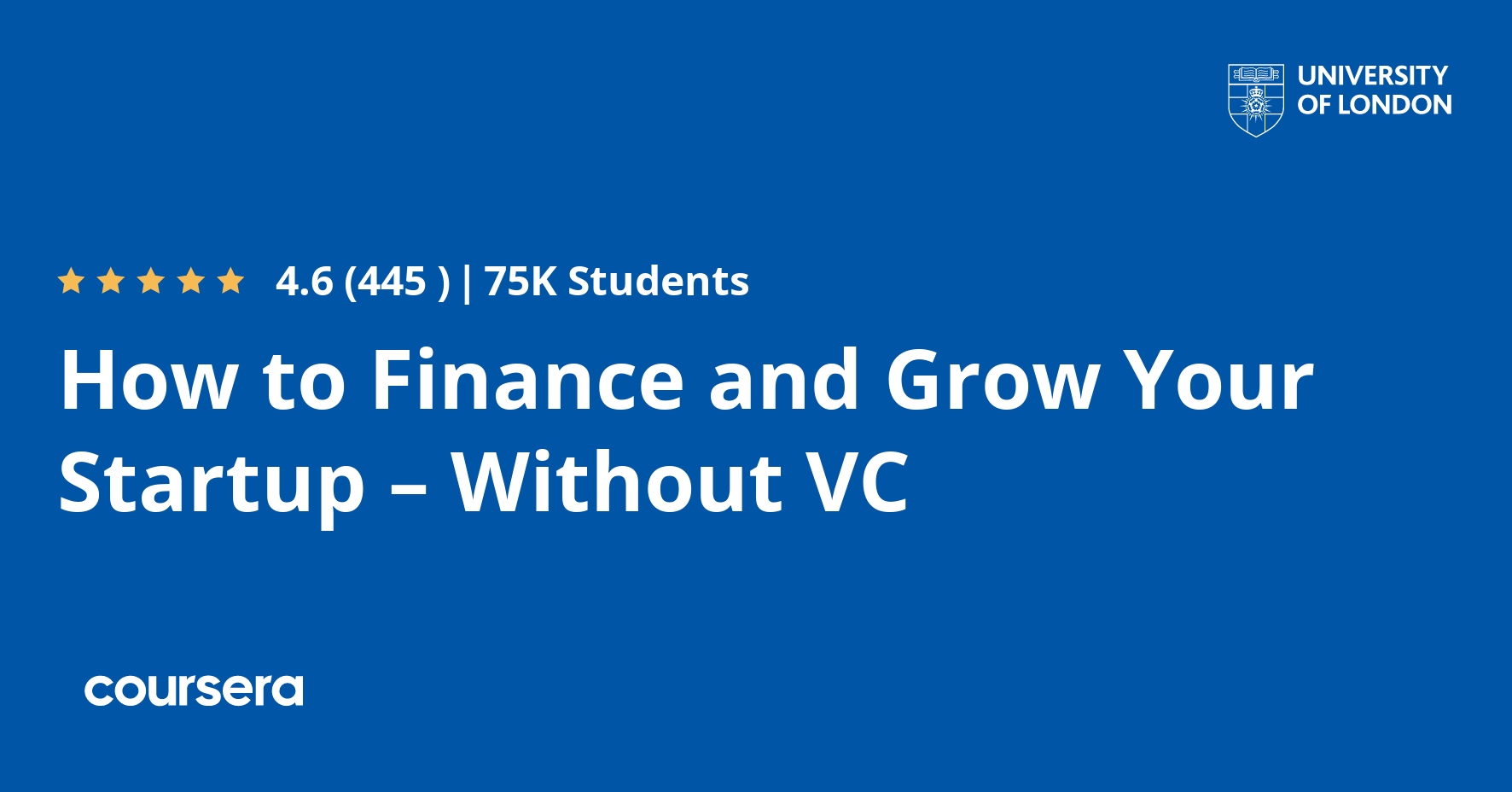Description
Who?
If you’re an entrepreneur at any stage of your journey, or even an aspiring one, and you need money to start or grow your business, this course is for you.
What?
This course will introduce, and help you put to use in your startup, the five models through which your customers can – and will, if you ask them! – fund your business. These five time-tested models have been put to use by entrepreneurial superstars like Michael Dell, Bill Gates, Richard Branson and more. Sadly, though, the five models are rarely talked about and not widely understood. Until now! The five models will be brought to life by the real-world stories of an inspiring collection of incredibly creative entrepreneurs from around the world – including successes and failures – through a series of captivating no-holds-barred interviews with founders and others, and investors, too.
Why?
More than two generations ago, the venture capital community – VC’s, business angels, incubators, and others – convinced the entrepreneurial world that writing business plans and raising venture capital constituted the twin centerpieces of entrepreneurial endeavor. They did so for very good reasons: the sometimes astonishing returns they’ve delivered to their investors and the incredibly large and valuable companies their ecosystem has created. But the vast majority of fast growing companies never take any angel or venture funding. Are they onto something that most of today’s entrepreneurial ecosystem has missed? Indeed, should a business angel or VC be seen as the first port of call for getting your nascent entrepreneurial venture off the ground or growing it faster? Perhaps not.
How?
You’ll be asked to do a series of exercises – out in the real world – to put your growing toolkit to use in your business or the one you hope to start. Hands-on, practical tools to help your business start and thrive – without venture capital. You’ll join our discussion board of fellow participants, if you like, and learn from others who are putting the tools to work, just as you are. And to suit today’s fast-paced lifestyles, we’ve broken what you’ll get – short lessons, interviews, thought-provoking questions, even some optional things to read – into bite-sized chunks, so you can log in and grab them whenever and wherever you are.
And what else?
If, after checking out and perhaps completing this course, you find your company in a position where seeking venture capital turns out to be the right thing to do next, John Mullins leads an inspiring and hands-on executive education course at London Business School – this one face-to-face – called Financing the Entrepreneurial Business. There, among a room full of investors and entrepreneurs, you’ll study a series of captivating real-world cases and learn everything an entrepreneur – or an investor, for that matter – needs to know to handle the person who sits across the deal table and take an entrepreneurial business from start-up to exit. See https://www.london.edu/education-and-development/executive-education/topic/finance/financing-the-entrepreneurial-business#.WIVY_FyTQ-0 for info.
What you will learn
Introduction: Why this course?
A widely-held notion in entrepreneurial circles is that the way to start and grow a thriving business is to come up with a great “idea”, write a great business plan, raise capital from angels or VCs, flawlessly execute the plan, and (Voila!) get rich! But it hardly ever happens that way. In fact, the vast majority of fast-growing companies never raise any venture capital. How do they do it, and how can you do it? This MOOC holds the answer. So let’s get going!
Module 1: Why taking venture capital is a bad idea
Welcome to Module 1! As you can see by the title of this first module, I hope to convince you in this chunk of the course that seeking (and taking) money from an angel or VC investor, at least early in the life of your venture, is an exceedingly bad idea. Here we go!
Module 2: Matchmaker models
Welcome to Module 2! In this module we’re going to focus on matchmaker models (sometimes called marketplaces – eBay, Airbnb, and Uber and the like) and how you can put them to work in your business. We’ll see examples of both successes and failures and, as in Module 1, we’ll get several perspectives other than mine, including that of a VC investor who knows this kind of business intimately. Ready? Let’s go!
Module 3: Pay-in-advance models
Welcome to Module 3! In this module we’ll see that taking a problem-solving perspective will be useful as we look at how to put pay-in-advance models to work in your business. You’re also going to learn from another failure story, this one in India – from rags to riches and back to rags again – as well as travel to Latin America to get the lay of the land there. And you’ll see that social entrepreneurs can use customer-funded models, too, even one tackling a problem as challenging as youth literacy! Here we go!
Module 4: Subscription models
Welcome to Module 4! In this module we’ll dig into the economics of subscription models, while exploring the key building blocks that underlie many other kinds of e-commerce models, too. Because subscription models have been, in my view, over-hyped, you’re going to hear about a handful of failure stories in this module, along with the story of a fast-growing online wine business that’s put a subscription model to work in a novel way. Are you ready for this one? Let’s go! John






